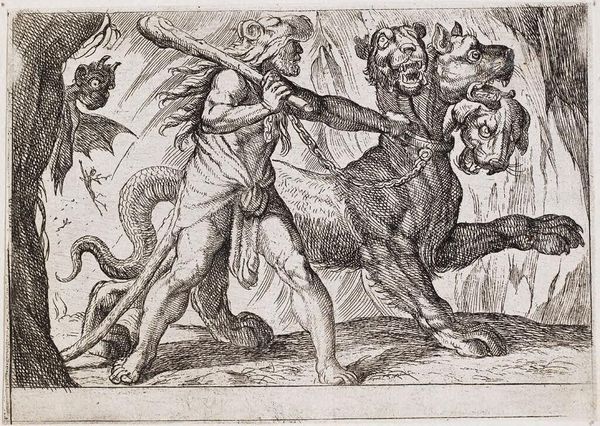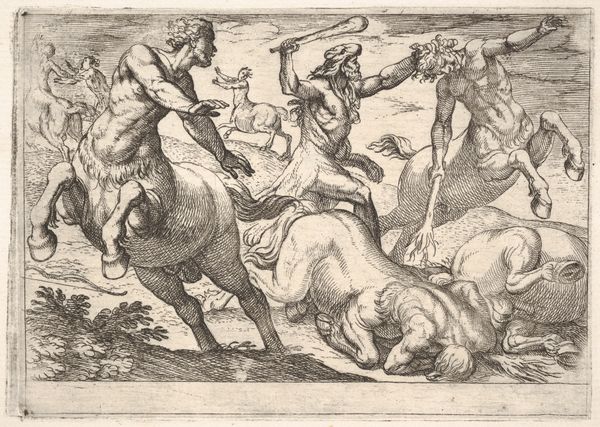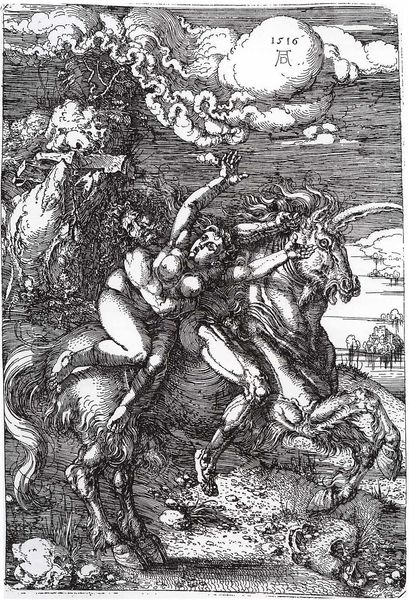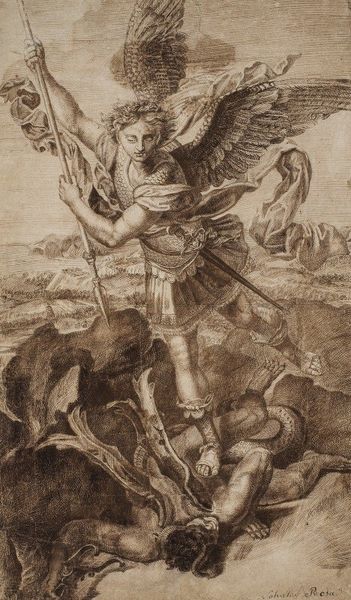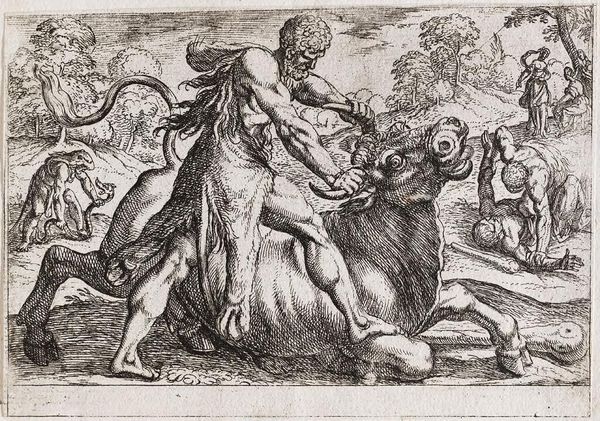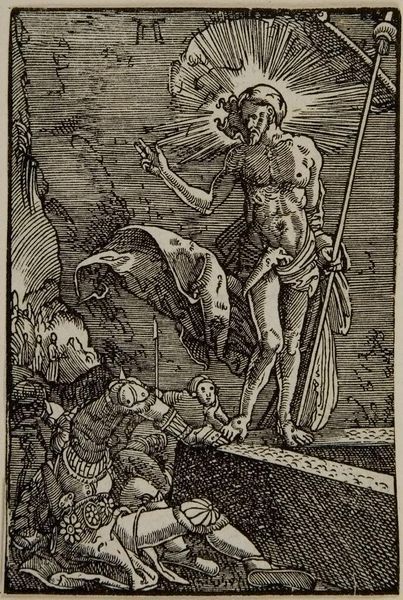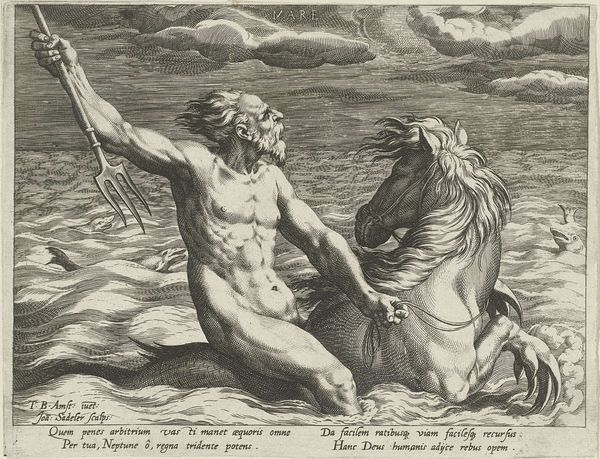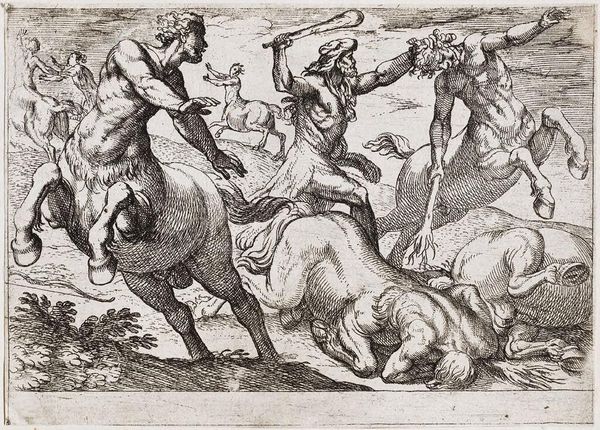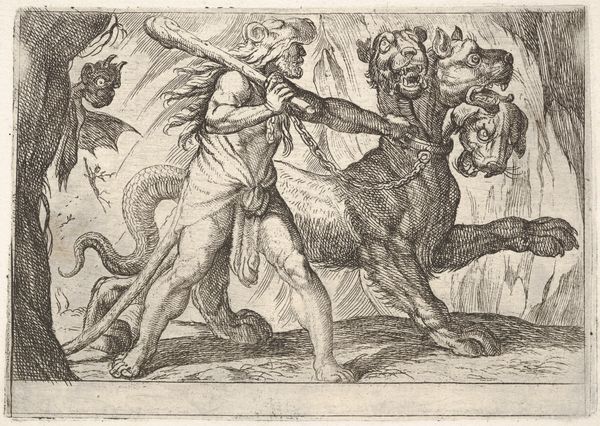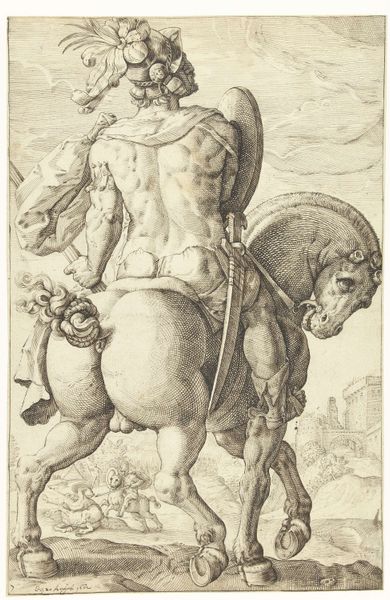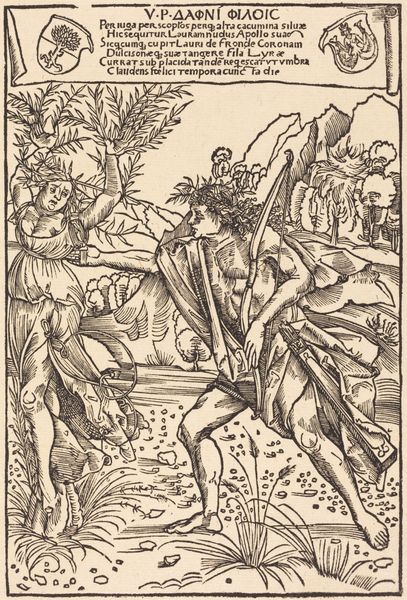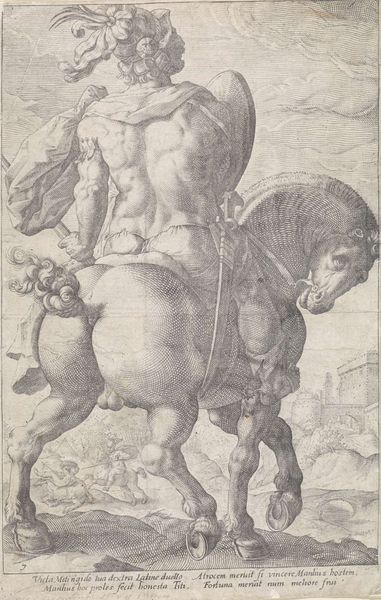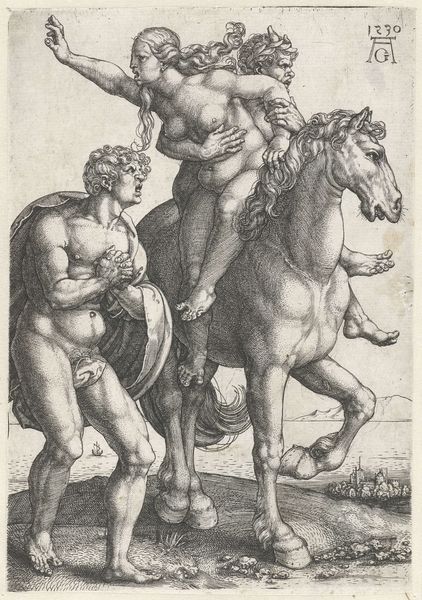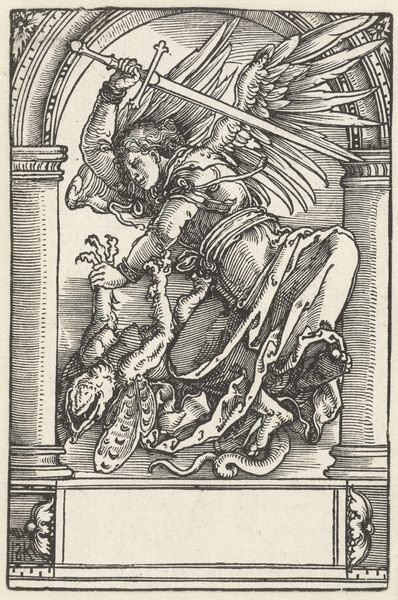
painting, oil-paint
#
allegory
#
painting
#
oil-paint
#
landscape
#
painted
#
figuration
#
oil painting
#
mythology
#
italian-renaissance
Copyright: Public domain
Curator: Here we have Piero di Cosimo's painting, *Allegory*, from around 1500. It’s an oil painting depicting a winged figure, a horse, and another figure lying in the water. What strikes you initially? Editor: Well, the colour is surprisingly subdued, almost muted, for an Italian Renaissance painting. The grey of the horse dominates, contrasting oddly with that theatrical slash of red drapery. And is that… oil paint on wood? I'm curious about the preparation that went into creating such an odd set of colours and textures. Curator: The imagery, though, invites interpretation. The winged figure clearly echoes classical allegorical depictions, holding the reins of a powerful steed and what looks to be like rope almost as an instrument of control. Perhaps it’s a symbol for how reason governs instinct? Editor: Or is it? What is the link between her actions and the prone figure half submerged in the foreground? It’s tempting to focus on that winged character – an easy visual shortcut – when, I wonder, if Cosimo is asking about female bodies at a specific socio-economic moment and the material and social means of their exploitation? The horse's power against the fragility of her body… it feels deliberate. Curator: And consider the Italian Renaissance context. Piero di Cosimo was a contemporary of Leonardo and Michelangelo. Mythological allegories served as visual embodiments of humanist values, reflecting the renewed interest in classical antiquity. The scene seems rooted in mythology; it does echo tales of taming mythical creatures. It brings to mind that idea of humanity striving to master and understand the world through reason. Editor: Perhaps. But it still comes down to how, and with what means, such 'mastery' comes about, even in the visual arts. Were women simply models to work upon? Were they partners in meaning-making? Curator: It seems those answers still lie in exploring how he deploys imagery that, while rooted in humanism and classical tradition, is still highly personal. Editor: And, from my angle, only ever arrived into being because of material acts in specific working and living conditions! Interesting how he uses a subtle palette and that stark red drape to both reveal and perhaps obscure the figures’ allegorical roles in all of this. Curator: Yes, it seems that even after all these centuries, di Cosimo still keeps us thinking about control, knowledge and creation through very interesting methods. Editor: Methods with human consequence that continue to echo today!
Comments
No comments
Be the first to comment and join the conversation on the ultimate creative platform.
